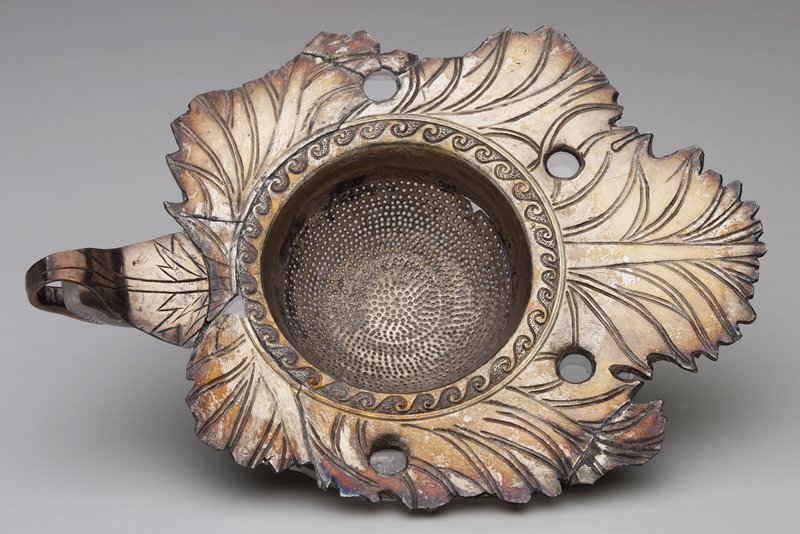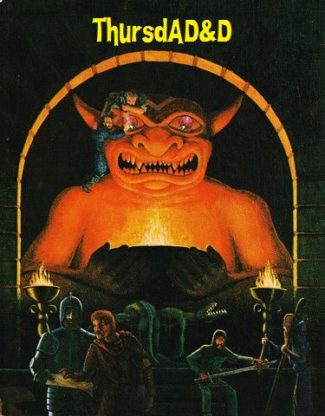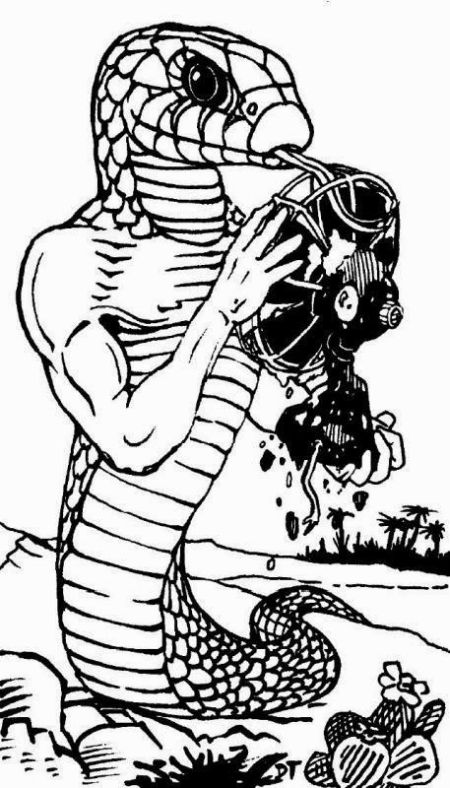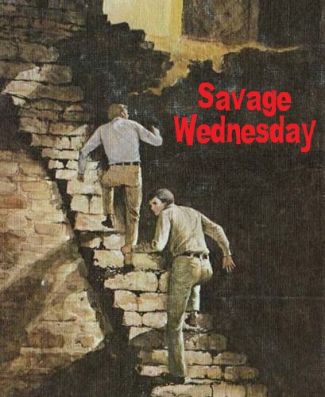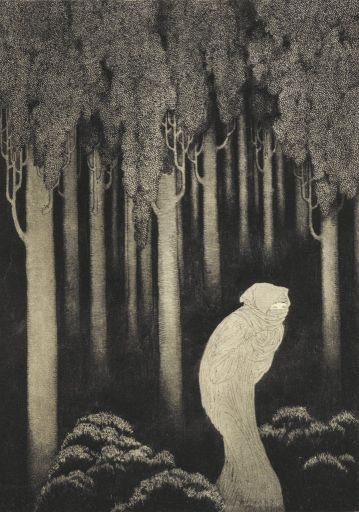Tuesday Terror: The Xylomorph

This week’s Tuesday Terror is inspired by Anthony Champ, who you can check out on Facebook and Instagram. The two pieces posted below to the right were provided by Mr. Champ and are posted with his kind permission.
The xylomorph is a strange and fierce predatory plant creature. Despite its humanoid form, it prefer to stalk on all fours, attacking by surprise when possible. Its most dreaded attack is its piercing tongue that injects a magical toxin capable of turning flesh and soft organs to wood. The xylomorph feeds on the transformed flesh and organs of its victims, leaving behind the skeletons, which are unaffected by the xylomorph’s bizarre venom.
Xylomorph
Medium plant, unaligned
Armor Class 16 (natural armor)
Hit Points 52 (8d8+16)
Speed 40 ft., climb 40 ft., swim 30 ft.
STR 16 (+3), DEX 19 (+4), CON 14 (+2), INT 6 (-2), WIS 13 (+1), CHA 11 (+0)
Saving Throws CON +5, INT +1
Skills Perception +4, Stealth +7
Damage Resistances cold; piercing from nonmagical attacks
Damage Immunities poison
Condition Immunities blinded, deafened, exhaustion, poisoned
Senses blindsight 60 ft. (blind beyond this radius), passive Perception 15
Languages —
Challenge 5 (1,800 XP)
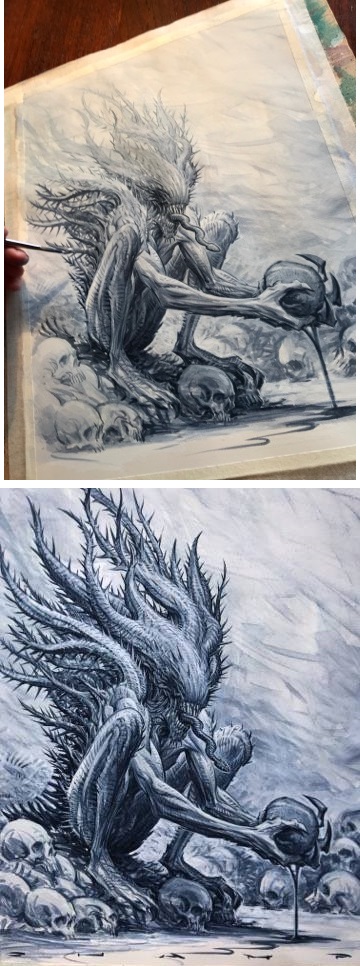
Amphibious. The xylomorph can breathe air and water.
Thorns. The xylomorph is covered with thick growths covered with tough thorns. At the start of its turn, the xylomorph deals 5 (1d10) piercing damage to any creature grappling it.
Tree Stride. As part of its move, the xylomorph may enter a living tree at the same as itself. This costs 5 feet of movement. The xylomorph instantly knows the location of all other living trees of the appropriate size within 80 feet. As part of the move used to enter the tree, the xylomorph can pass to one of those trees or step out of the tree it is in. It appears in a spot of its choice within 5 feet of the destination tree, using another 5 feet of movement. If the xylomorph has no movement left, it appears within 5 feet of the tree it entered. The xylomorph can use this transportation ability once per round.
Actions
Claws. Melee Weapon Attack: +7 to hit, reach 5 ft., one target. Hit: 8 (1d8+4) slashing damage, and the target is grappled (escape DC 15). Until this grapple ends, the target is restrained, the xylomorph can automatically hit the target with its claws, and the xylomorph can’t make claws attacks against other targets.
Tongue. Melee Weapon Attack: +7 to hit, one creature that grappled by the xylomorph. Hit: 7 (1d6+4) piercing damage, and the target must make a DC 15 Constitution saving throw. If the saving throw fails by 5 or more, the creature turns to wood and is instantly petrified. Otherwise, a creature that fails the save begins to turn to wood and is restrained. The restrained creature must repeat the saving throw at the end of its next turn, becoming petrified on a failure or ending the effect on a success. The transformation lasts until the creature is freed by the greater restoration spell or other magic.

